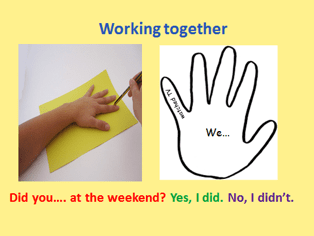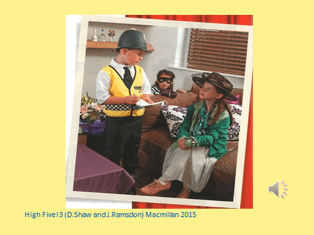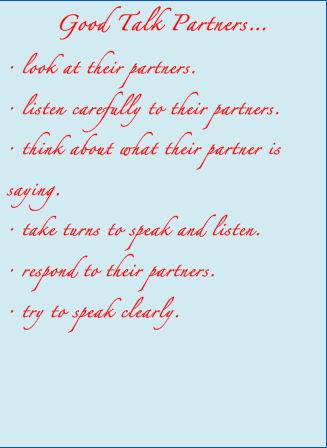Cooperative Learning in the EFL/ESL Classroom
How much talking do your young learners do in class? We know that children love talking in their mother tongue – in fact it can be difficult to get them to stop at times – but getting children to talk in English is a challenge in many EFL classrooms.
Some children are reluctant to talk in English due to shyness, especially when speaking in front of the whole class. Other children may lack confidence in their ideas or in their ability to use English to express themselves.
Using the strategy of Talk Partners, where each child works with a set partner to rehearse language and to share ideas, is an easy and practical way to build children’s confidence and encourage them to talk in English. This strategy gives children more thinking time and allows them to try out language and test ideas in a familiar and safe environment. As a result, they are more willing to take risks with their language, answer more open-ended questions and produce more extended responses. However, the successful use of this strategy doesn’t just happen, it needs to be carefully planned. Key things to focus on include setting up the strategy, developing the children’s communication skills and carefully selecting and building up Talk Partner tasks.
Setting up Talk Partners
Talk Partners can be set up at any point of the course. There are different ways of doing this, but random pairs are generally considered to be fairer by children. You can use matching cards, pull children’s names out of a bag or use one of the many random group generator apps that are available on phones and computers. It is important to take time to explain the Talk Partners strategy to the class and to demonstrate how to turn and talk with a partner before you start.
Developing communication skills
For the strategy of Talk Partners to work effectively we need to help children develop their communication skills. Communication is a two-way process and learners need to learn how to actively listen to their partner and talk meaningfully about the task. It’s a good idea, therefore, to establish some ground rules for being a good Talk Partner. These can be displayed on a classroom poster and referred to before starting a new Talk Partner task. A list of rules might look like this:
We can also provide support for talk by orally modeling the language the children need to complete the Talk partner task or by providing written language prompts and frames for speaking. These can be displayed on the board or the classroom wall and gradually reduced as the children gain communicative competence.
Building up Talk Partner tasks
There are many opportunities for using the Talk Partners strategy in a lesson, but it’s important to build up the children’s skills in small steps. A good way to start is to use Talk Partners to practise short question and answer exchanges in pairs, for example
- Do you like …?
- Have you got …?
- What’s your favourite….?
Think Pair Share
Once the children are confident doing this, you can ask them to find out and record similarities. For example, in the following activity, children need to find out and record five things they both did at the weekend. Talk is supported through language prompts and children record the five activities on their hand print.
Open ended questions can be used with more competent language learners and the cooperative learning strategy think-pair-share provides children with the extra thinking time they need to answer these questions. In this strategy, the children think independently about the question before discussing their ideas with their Talk Partner.
Then the pairs share their ideas with the whole group. Possible tasks include asking learners to discuss what they know about a topic, make a prediction or give and justify an opinion. In the following pre-listening task, the learners look at a photo of children acting out a play and discuss the questions:
- Who are the characters?
- What do you think the characters are talking about?
After sharing their ideas with a partner and then the whole class, they listen to the first act of a short EFL play to find out.
There are many reasons for using the Talk Partners strategy in your classroom. It can be used successfully in big or small classes and provides opportunities for you to observe, listen and assess your learners as they talk. Talk Partners tasks are also enjoyable and help develop a more caring and cooperative classroom environment where everyone has a voice. So, what are you waiting for? It’s time to talk!





